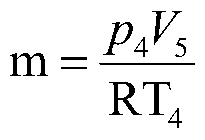Device and method for measuring vacuum degrees in hollow glass microbeads
A technology of hollow glass microspheres and vacuum degree, applied in the direction of measuring devices, vacuum gauges, measuring fluid pressure, etc., can solve the problems of no measuring device and method, no good measuring method, low accuracy, etc., to achieve effective testing methods, Accurate and reliable measurement results, the effect of accurate precision
- Summary
- Abstract
- Description
- Claims
- Application Information
AI Technical Summary
Problems solved by technology
Method used
Image
Examples
Embodiment Construction
[0032] The application will be described in further detail below in conjunction with the accompanying drawings. It is necessary to point out that the following specific embodiments are only used to further illustrate the application, and cannot be interpreted as limiting the protection scope of the application. The above application content makes some non-essential improvements and adjustments to this application.
[0033] Such as figure 1 Shown is a device for measuring the vacuum degree in hollow glass microspheres, including a measuring chamber 1 and a reference chamber 2, the measuring chamber 1 is fixed with a container 3, and the measuring chamber directly above the container 3 is The chamber 1 is provided with an extruding piston 11, and the outer diameter of the extruding piston 11 is in interference fit with the inner diameter of the container 3. The extruding piston 11 is connected with the hydraulic motor 9, and the extruding piston 11 is driven by the hydraulic mot...
PUM
 Login to View More
Login to View More Abstract
Description
Claims
Application Information
 Login to View More
Login to View More - R&D
- Intellectual Property
- Life Sciences
- Materials
- Tech Scout
- Unparalleled Data Quality
- Higher Quality Content
- 60% Fewer Hallucinations
Browse by: Latest US Patents, China's latest patents, Technical Efficacy Thesaurus, Application Domain, Technology Topic, Popular Technical Reports.
© 2025 PatSnap. All rights reserved.Legal|Privacy policy|Modern Slavery Act Transparency Statement|Sitemap|About US| Contact US: help@patsnap.com



